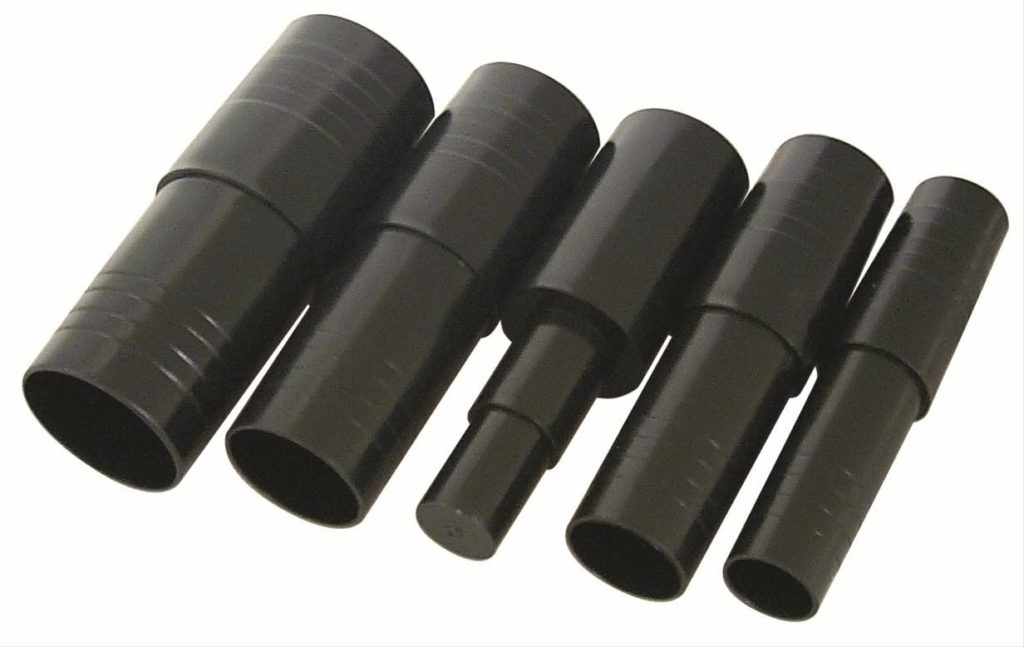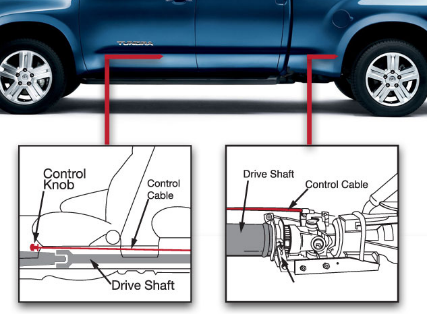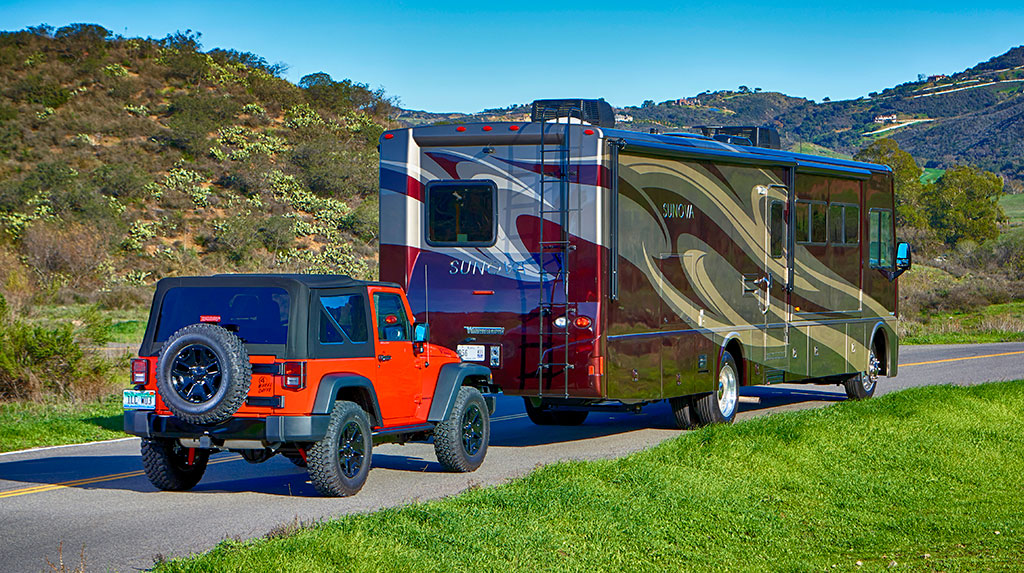Let’s face some facts: Air travel is challenging right now, but you still want to go on vacation. AAA recently reported that it expects Americans to take 700 million trips this summer, and 97% of that travel will be road trips. Many of you will choose a motor home for your road trip to avoid hotel rooms. If your plans include flat-towing (also called dinghy towing) your favorite manual-transmission equipped vehicle, here are some tips to help you do without damaging the transmission.
What is Flat Towing?
Flat towing is when a vehicle is pulled behind another one, and all four tires of the towed vehicle are on the ground as opposed to being on a trailer, or having the front set of tires resting on a car dolly. The vehicle being towed will have all four tires rolling on the ground.
Check the Owner’s Manual
If your vehicle came from the factory with a manual transmission, read the owner’s manual. Vehicles which are popular for flat towing often include a section in the owner’s manual stating what needs to be done in order to tow the vehicle without incurring any damage to the drivetrain.
Aftermarket Transmissions
If you will be flat towing a vehicle that you’ve installed an aftermarket transmission into such as the TREMEC TR-4050 5-speed or Magnum 6-speed, you will need to disconnect or remove the driveshaft. Even with the transmission in neutral, if the driveshaft is not disconnected or removed, the mainshaft in the transmission will turn with the rear wheels. However, the cluster will not turn and lubrication will not be fed to critical transmission parts.
This will lead to damaged needle bearings under the speed gears and/or the pocket bearing between the mainshaft and input shaft. This is why it’s crucial to remove the driveshaft if you’re having to flat tow your TREMEC-equipped vehicle. If you can’t remove the driveshaft before flat towing, don’t flat tow the vehicle.

Disconnecting the Driveshaft
In most cases, you will need to remove the rear driveshaft from the vehicle when flat-towing a manual transmission vehicle. If the transmission uses a slip-fit yoke, however, transmission fluid will leaking out of the tailshaft housing once the driveshaft is removed. To remedy this, you will need a plug that fits into the housing like the output yoke does. Plug kits are available from a number of TREMEC distributors and online parts retailers.

For TREMEC equipped vehicles where you’ll be having to dolly- or flat-tow frequently (such as trucks/off-road vehicles and some cars behind an RV) you can pick up this nifty driveshaft coupler/disconnect setup from Superior Driveline to save time and the effort of completely removing the driveshaft before towing, then reinstalling it when you reach your destination.

Flat- or dolly-towing a vehicle has advantages over towing a vehicle on a full trailer, including a much reduced towing weight for the tow vehicle, and no need for extra parking to stash a trailer. Downside is you will need to pick up a vehicle specific tow bar for safe and reliable towing, and you will have to disconnect the driveshaft somehow to prevent transmission damage.
Other Towing Information
When preparing your towing package, you will need some specialized equipment for both safety and to meet the towing laws in states you’ll be traveling through.
Accessories and information are available at RV outlets and dealerships.
Here are some helpful links with additional information:
- MotorHome Magazine provides dinghy guides packed with setup tips, additional equipment and a list of dinghy-ready vehicles.
- Dinghy Towing Guides
- Dinghy Digest: How to Tow an ‘Untowable’
- Dinghy Digest: Family-Friendly Dinghy Vehicles
- Dinghy Digest: What’s a Baseplate?
- Family Motor Coach Association provides a library of information on towing guides
- The United States Department of Transportation provides tips on towing and other useful guidelines

